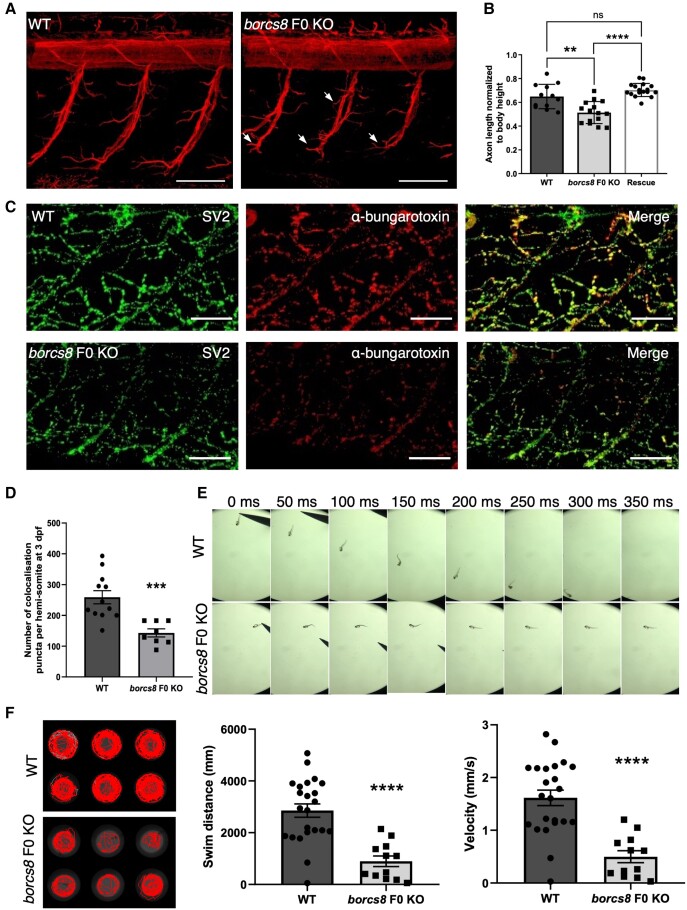Fig. 7 Neuromuscular defects and impaired motility in borcs8 F0 knockout zebrafish larvae. (A) Primary motor axons in wild-type (WT) and borcs8 F0 knockout (KO) larvae at 3 days post-fertilization (dpf). Scale bars = 50 ?m. Defects in axon branching are indicated by white arrows. (B) Quantification shows marked reduction in the axon length of motor neurons in borcs8 F0 KO (N = 3, n = 15) compared to WT (N = 3, n = 12) and Rescue larvae (N = 3, n = 18). (C) Co-immunostaining of zebrafish neuromuscular junctions (NMJs) with presynaptic (SV2; green) and postsynaptic (?-bungarotoxin; red) markers in 3 dpf zebrafish. Scale bars = 50 ?m. (D) Quantification of co-localizing presynaptic and postsynaptic markers per hemisomite, normalized to the number of presynaptic puncta, showed a significant reduction in the number of puncta in borcs8 F0 KO larvae (N = 3?4, n = 8?12). (E) Representative snapshots of touch escape responses (N = 6) over 350 ms. Zebrafish borcs8 F0 KO larvae have very little to no escape response at 2 dpf. (F) Representative swimming tracks of wild-type control and borcs8 F0 KO fish at 5 dpf. The borcs8 F0 KO larvae (N = 3, n = 32) displayed impaired swim distance and velocity compared to controls (N = 3, n = 24). All data are represented as the mean ± standard error of the mean (SEM). Statistical significance was calculated by Student?s t-test, or one-way ANOVA followed by Tukey?s multiple comparisons tests. **P < 0.01; ***P < 0.001; ****P < 0.0001. N = replicates; n = sample size; ns = not significant.
Image
Figure Caption
Figure Data
Acknowledgments
This image is the copyrighted work of the attributed author or publisher, and
ZFIN has permission only to display this image to its users.
Additional permissions should be obtained from the applicable author or publisher of the image.
Full text @ Brain

